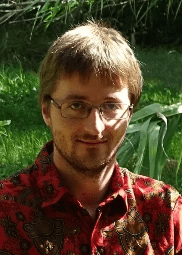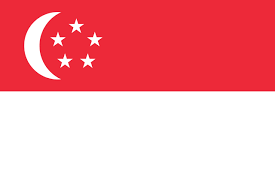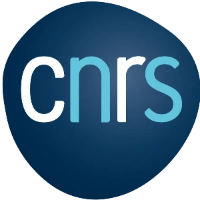

GROUPOOL COVID-19 RESEARCH
Mission
The objective of our association is to bring together a research community on sample pooling for RT-qPCR diagnostic, with the intention to put forward strategies and algorithms that can expand the screening capacity of SARS-COV-2 infections.
We are looking forward to connect with researchers across the world interested in those topics
Who We are
The people behind Groupool

About Group Testing
What is Group/Pool Testing?
The concept of Group Testing (or Pool Testing) is credited to Dorfman (1943) who wished to test US servicemen for syphilis. In group testing, multiple samples are mixed, and the resulting ‘pool’, is tested using the same amount of material or equipment that would have been required to test one individual sample. However, when at least one sample in the pool is positive, then the pool test fails. This means that (at least) one sample in the pool is positive, but gives no information about which one. The most naive approach is then to re-test individually each sample, which can be costly and time consuming.
Group testing has already been used to screen large portions of the population in scarcely-infected areas (or as a best-effort measure, when test availability was low). Group testing has been successfully used to identify viral diseases, such as HIV, ZIKA , and Influenza. In addition, group testing has been suggested as a screening method for routine HCV, HBV, and HIV -1 PCR donors for blood-banks.
Group Testing for COVID-19
In light of the recent pandemic and the urging need to test vast number of subjects, the idea of group testing is becoming more and more appealing. It is a commonly used testing procedure in Israel, Germany, South Korea, Ghana and some US and Indian states. Field research focusing on reducing the number of tests did not analyse prior information strategies but instead provided simulation (or small sample) results showing the benefits of pool testing. In most cases, the existing literature only uses pooling as a way to screen the infection in an emerging context, not as a precise approach to identify which individuals are infected and which are not. We also note projects meant to reduce the amount of work required for pool testing: e.g. the Origami Assays Project, a collection of open source pool testing designs for standard 96 well plates. The Origami design tests 1120 patients in 94 assay wells. Yelin et al. demonstrated that pool testing can be used effectively to identify one positive SARS-COV-2 result within 32 samples, and possibly within 64 samples if the cycles are amplified with an estimated false-negative rate of 10%. Täufer uses a strategy consisting in running ‘cross batches’, where the same individuals are tested several times but in different pools, which eventually leads to positive sample identification. The resulting approach ends up using more tests overall (since it tests every individual more than once) than the strategy proposed in this work and does not exploit prior information. Similarly, Sinnott-Armstrong et al. suggested to identify low-risk individuals (i.e. asymptomatic and mild cases) and to test them as a pool using a matrix-based method, so as to reduce the number of tests required by up to eight-fold, depending on the prevalence. It is hence plausible to assume that a successful emergency application of the refined pool testing procedures described in this paper would improve the COVID-19 testing capacity significantly.
Group Testing using Saliva Samples
Tests based on saliva samples appear to show promising results in terms of false negative risks while improving the acceptance of tests among the population, decreasing the time needed for sample collection and reducing the exposure of health care practitioners. In this context, we are looking forward to seeing whether group testing on saliva samples would provide reliable results.
Publications
COVID-19 Related academic articles by Groupool Members
Marc Beunardeau, Éric Brier, Noémie Cartier, Aisling Connolly, Nathanaël Courant, Rémi Géraud-Stewart, David Naccache, Ofer Yifrach-Stav
Submitted to ArXiv on 6 May 2020
As humanity struggles to contain the global Covid-19 infection, prophylactic actions are grandly slowed down by the shortage of testing kits. Governments have taken several measures to work around this shortage: the FDA has become more liberal on the approval of Covid-19 tests in the US. In the UK emergency measures allowed to increase the daily number of locally produced test kits to 100,000. China has recently launched a massive test manufacturing program. However, all those efforts are very insufficient and many poor countries are still under threat. A popular method for reducing the number of tests consists in pooling samples, i.e. mixing patient samples and testing the mixed samples once. If all the samples are negative, pooling succeeds at a unitary cost. However, if a single sample is positive, failure does not indicate which patient is infected. This paper describes how to optimally detect infected patients in pools, i.e. using a minimal number of tests to precisely identify them, given the a priori probabilities that each of the patients is healthy. Those probabilities can be estimated using questionnaires, supervised machine learning or clinical examinations. The resulting algorithms, which can be interpreted as informed divide-and-conquer strategies, are non-intuitive and quite surprising. They are patent-free. Co-authors are listed in alphabetical order.
Gollier, Christian and Gossner, Olivier
Covid Economics (2), 2020.
We show how group testing can be used in three applications to multiply the efficiency of tests against COVID-19: estimating virus prevalence, releasing group to the work force, and testing for individual infectious status. For an infection level around 2%, group testing could potentially allow to save 94% of tests in the first application, 95% in the second, and 85% in the third one.
Vincent Brault, Bastien Mallein, Jean-Francois Rupprecht
Submitted to ArXiv on 14 May 2020
Sample pooling consists in combining samples from multiple individuals into a single pool that is then tested using a unique test-kit. A positive test means that at least one individual within the pool is infected. Here, we propose an analysis and applications of sample pooling to the epidemiologic monitoring of COVID-19. We first introduce a model of the RT-qPCR process used to test for the presence of virus in a sample and construct a statistical model for the viral load in a typical infected individual inspired by the clinical data from Jones et. al. (2020). We then propose a method for the measure of the prevalence in a population, based on group testing, taking into account the increased number of false negatives associated with this method. Finally, we present an application of sample pooling for the prevention of epidemic outbreak in closed connected communities (e.g. nursing homes).
General Public Awareness Communications
Le Monde
April 1, 2020
Pour sortir plus rapidement du confinement total, trois économistes, Olivier Gossner, Christian Gollier et David Sraer, proposent dans une tribune au « Monde » d’utiliser des techniques statistiques des « tests de groupes » et d’échantillonnage afin d’éviter d’attendre la possibilité d’effectuer un dépistage de masse.
Antoine Deleforge
9 April 2020
Now that a large part of the world’ population is in lockdown to fight against the global spread of the new coronavirus, the crucial question is: What’s next? As lock-down measures will progressively be lifted, the key to avoid second and third waves of the pandemics will be massive and rapid testing, combined with case tracking and targeted quarantining. Unfortunately, the testing capacity of most countries is currently not nearly enough.
École Normale Supérieure - Actualités
July 2020
Des compétences en mathématiques et en informatique mises d’une gestion optimisée des stocks de tests de dépistage:
Professeur, spécialiste de la sécurité informatique à l’ENS-PSL, David Naccache s’est engagé dans la lutte contre le Covid-19 enDes compétences en mathématiques et en informatique mises d’une gestion optimisée des stocks de tests de dépistage mobilisant au pied levé une équipe de chercheurs et de normaliens en informatique et mathématiques. En combinant algorithmes et techniques de group testing développées par Robert Dorfman dans les années 40, ces informaticiens et mathématiciens sont parvenus à proposer une méthode de contrôle de la pandémie moins gourmande en tests.
Déjà déployée dans plusieurs pays, elle a permis de réduire par 3 à 4 le nombre de tests nécessaires pour une population. Elle est particulièrement précieuse à l’heure où la pandémie touche indifféremment pays développés et pays pauvres.Exposé de Bastien Mallein
Youtube
Jul 6, 2020
Yvon Mayday seminar
Scientific talk to the GdT Maths4covid19 seminar (Laboratoire Jacques-Louis Lions) on the pre-print “Group testing as a strategy for the epidemiologic monitoring of COVID-19”.
Covers practical implementation of group testing, censored-Gaussian fits of the viral load distribution, measure of the prevalence in a population and application of sample pooling for the prevention of epidemic outbreak in communities.
The Use of Group Testing for COVID-19 in the World
A non-exhaustive list of countries where pooling protocols are proposed
- To see the Centers for Disease Control and Prevention (CDC)'s Interim Guidance for Use of Pooling Procedures in SARS-CoV-2 Diagnostic, Screening, and Surveillance Testing Click here
- For news articles or academic articles related to the various countries, click on the flags

MODCOV19 a pour volonté de coordonner les recherches en modélisation dans le contexte de l'épidémie covid19. Sans se limiter à la modélisation de l’expansion de l'épidémie, il s’agit de permettre aux scientifiques de traiter efficacement et de manière pluridisciplinaire un vaste ensemble de sujets relatifs à la modélisation en situation de crise épidémique et de partager au sein de la communauté de modélisation une veille bibliographique critique. Avec une vision aussi claire que possible de ce qui se fait déjà, MODCOV19 apporte une expertise et peut coordonner la réponse aux demandes.

The Fields Institute, in partnership with AARMS, CRM, and PIMS, and in collaboration with PHAC, VIDO-Intervac, and the NRC, has formed the Mathematical Modelling of COVID-19 Task Force to undertake research relating to COVID-19.
Under the leadership of Fields Institute Director Kumar Murty, the task force will bring together Canadian mathematics institutes, national and international co-investigators, collaborators, and team members, to mobilize a network of infectious disease modellers who will assess transmission risk, predict outbreak trajectories, and evaluate the effectiveness of COVID-19 countermeasures.
The project is one of 96 funded by CIHR in a concerted effort to understand and control COVID-19.

The project BiblioVid is a project initiated by Grenoble Alpes University Hospital Center, intended to join forces on monitoring and analyzing the most recent literature on COVID-19 and the second one aimed at providing support for health students during the COVID-19 health crisis.

A lot of research articles concerning SARS-CoV-2/COVID-19 are published every day. Many of them, so-called pre-prints, are not reviewed in a professional reviewing process at the time of publication. Others are already reviewed and published in well-known journals. Collabovid helps researchers to identify the most relevant information by using Natural Language Processing.
Expert advice from scientists to protect yourself, understand, and act to stop the spread of SARS-CoV-2, the coronavirus responsible for COVID-19.
Origami Assays
Examples of Pooling for COVID-19

Wikipedia
List of countries implementing pool testing strategy against COVID-19
Group Testing in the News
Israeli Researchers Introduce Pooling Method for COVID-19 Testing of Over HospiMedica Daily Clinical News
March 24, 2020
April 24, 2020
June 6, 2020
How will Syracuse University test 20,000 students for coronavirus? By pooling their saliva
Syracuse.com
July 08, 2020
Ramping up early detection of COVID-19 with limited resources: The role of pool testing
International Growth Center
June 22, 2020
Dépistage Covid : une capacité de 30.000 à 60.000 tests par jour à l’ULiège
L'université de Liège
June 26, 2020
Covid-19: Algarve uses ‘pool testing’ to test over 20,000 people
Portugal Resident
July 6, 2020
July 8, 2020
July 10, 2020
July 13, 2020
Pooling Samples Could Help You Get Your COVID-19 Test Results Faster
Joanna Goodrich, IEEE Spectrum
July 17, 2020
July 20, 2020
Pooling Samples for COVID-19 May be Best Step Forward
Rapid Microbiology
July 21, 2020
Why pooled tests could be a way to reopen safely without a vaccine
MIT Technology Review
July 23, 2020
Stanford Health Care can begin pooled testing for COVID-19
Stanford Health News Center
July 27, 2020
In the Literature
Group testing in the Literature - Featured Articles
Matthias Täufer
Submitted to BioRxiv 13 April 2020
Baha Abdalhamid, Christopher R. Bilder, Emily L. McCutchen, Steven H. Hinrichs, Scott A. Koepsell and Peter C. Iwen
Am J Clin Pathol. 18 Apr 2020; XX:1–4
Eberhardt, J. N., Breuckmann, N. P., & Eberhardt, C. S.
Journal of Clinical Virology, 104382. 23 April 2020
Idan Yelin, Noga Aharony, Einat Shaer-Tamar, Amir Argoetti, Esther Messer, Dina Berenbaum, Einat Shafran, Areen Kuzli, Nagam Gandali, Tamar Hashimshony, Yael Mandel-Gutfreund, Michael Halberthal, Yuval Geffen, Moran Szwarcwort-Cohen, Roy Kishony
Clinical Infectious Diseases, 2 May 2020
Roni Ben-Ami1, Agnes Klochendler, Matan Seidel, Tal Sido, Ori Gurel-Gurevich , Moran Yassour, Eran Meshorer , Gil Benedek , Irit Fogel , Esther Oiknine-Djian , Asaf Gertler , Zeev Rotstein, Bruno Lavi , Yuval Dor, Dana G. Wolf, Maayan Salton, Yotam Drier, The Hebrew University-Hadassah COVID-19 diagnosis team
Submitted to MedRxiv on 7 May 2020
Submitted to ArXiv 3 June 2020
Arvind Khodare , Abhishek Padhi , Ekta Gupta , Reshu Agarwal , Shantanu Dubey , Shiv Kumar Sarin
Submitted to MedRxiv 11 June 2020
Byron Freire-Paspuel, Patricio Vega-Mariño, Alberto Velez, Marilyn Cruz and Miguel Angel Garcia-Bereguiain
Submitted to MedRxiv 3 July 2020
Submitted to ArXiv 22 July 2020
Ayaka Sakata
Submitted to ArXiv 27 July 2020
CONTACT US

Contact Us
info@
webmaster: Ofer Yifrach-Stav































